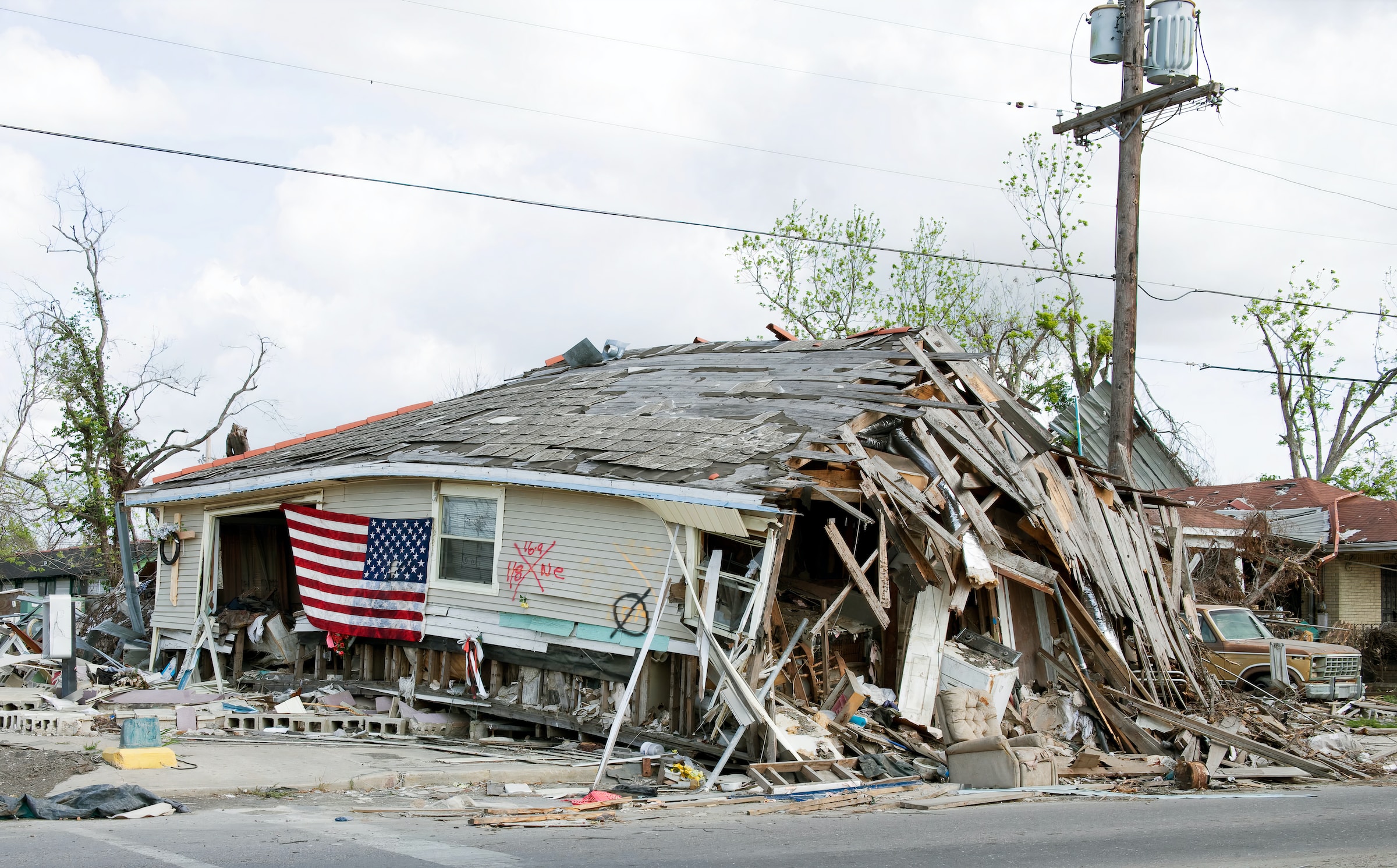The history of destructive storms in the United States goes all the way back to the founding days of the nation. When preparing for future storm systems, it can be helpful to at the worst hurricanes of all time in order to learn from the past.
Current research suggests we should brace ourselves for some gnarly hurricane seasons in the coming years. Scientists are predicting back-to-back hurricanes in coastal areas in the next few decades. Some areas, like the Gulf coast of the United States, will likely see double hits once every three years, according to new estimates. “Rising sea levels and climate change make sequential damaging hurricanes more likely as the century progresses,” says study lead author Dazhi Xi, a postdoctoral researcher and a former graduate student in civil and environmental engineering at Princeton University. “Today’s extremely rare events will become far more frequent.”
This topic is fascinating for some, but somber for many others. Here is StudyFinds list of the five worst hurricanes. They serve as a way to consider past damage and response in order to prepare for the future.

The List: Worst Hurricanes of All Time
1. Galveston, Texas (1900)
Hands-down the worst storm in United States history occurred over Galveston, TX in 1900. “This hurricane sets the record for the most casualties still to this day. With an estimated 8,000 to 12,000 deaths. This Category 4 storm hit the city of Galveston in September 1900, with winds over 135 miles-per-hour. The city wasn’t as prepared as it should have been because unfortunately, the forecasters‘ predictions were wrong about where the storm was heading. Hurricane science was very new, to the point that they didn’t even predict the storm would enter the Gulf of Mexico,” explains Green Matters.
Related: Why Don’t Hurricanes Directly Hit Tampa Bay?
“After crossing over Cuba as a tropical storm, it emerged from the Florida straight and quickly intensified to hurricane status. The storm continued to churn in the Gulf of Mexico, gaining strength before making a right turn into Texas. The storm continued its path north and slowly weakened as it passed over Oklahoma, the Great Lakes and Halifax, Nova Scotia in Canada,” offers Fox 13 News.

2. Lake Okeechobee, Florida (1928)
The next historical storm on the list touched down in Florida. The storm had a ruinous effect on the lives of Black Farmworkers. “In 1928, not that many people lived in Florida, and the area around Lake Okeechobee was filled with mostly farmers at the time. Residents were warned of the incoming Category 4 hurricane — they just weren’t given an accurate time of arrival. After they had thought the storm had come and gone, they returned home only to soon be greeted by 140 mile-per-hour winds and water surges that wiped homes right out of the ground, resulting in an estimated 2,500 to 3,000 casualties, per Farmer’s Almanac,” details Green Matters.
The damage and loss of life highlighted the need to invest in infrastructure as many deaths were caused by a storm surge that breached the dike surrounding Lake Okeechobee and flooded the surrounding area.

3. Hurricane Maria (2017)
One of the more recent storms on our list is a stark reminder of nature’s power. “With maximum sustained winds over 175 miles per hour, Hurricane Maria blasted Puerto Rico to claim more than 3,000 lives and generate nearly $100 billion in property damage. It remains the deadliest Atlantic hurricane in recorded history. As of 2021, residents of the island continue to recover from the once-in-a-lifetime hurricane,” according to Morgan & Morgan.
Related: How To Save Money While Preparing for Hurricane Season
“It was one of the deadliest storms to hit the U.S. Originally, the death toll was under reported by the government, with 64 deaths. After an independent investigation, the number reached 2,975, while experts believe it could be as high as 4,500,” states Fodor’s Travels.
4. Hurricane Camille (1969)
Some readers may remember this storm. “When Hurricane Camille made landfall the evening of Aug. 17, 1969, along the Mississippi Gulf Coast near Waveland, Mississippi, it had a wind speed of 175 mph. Or at least that’s what post-storm reanalysis data indicates. The precise wind speed isn’t known because ‘the hurricane destroyed all the wind-recording instruments in the landfall area,’ according to the National Weather Service,” states The Healthy.
“The incredible storm surge was the main reason why 259 people lost their lives. Camille’s path of destruction left behind $1.4 billion in property damage. It would have been considerably higher if the storm had grown in size before making landfall,” adds Morgan & Morgan.

5. Hurricane Katrina (2005)
“Hurricane Katrina was a Category 5 hurricane that struck the Gulf Coast of the United States on August 29, 2005. The storm surge breached the levees in New Orleans, causing catastrophic flooding and resulting in over 1,800 deaths,” writes American Oceans.
“An estimated storm surge of 25 feet in Mississippi was one of the contributing factors that made Katrina one of the deadliest hurricanes in American history. More than 1,800 people lost their lives because of the storm surge and a famously compromised levy system that caused deadly flooding over 80 percent of New Orleans. The property damage bill for Hurricane Katrina exceeded $100 billion,” according to Morgan & Morgan.




























